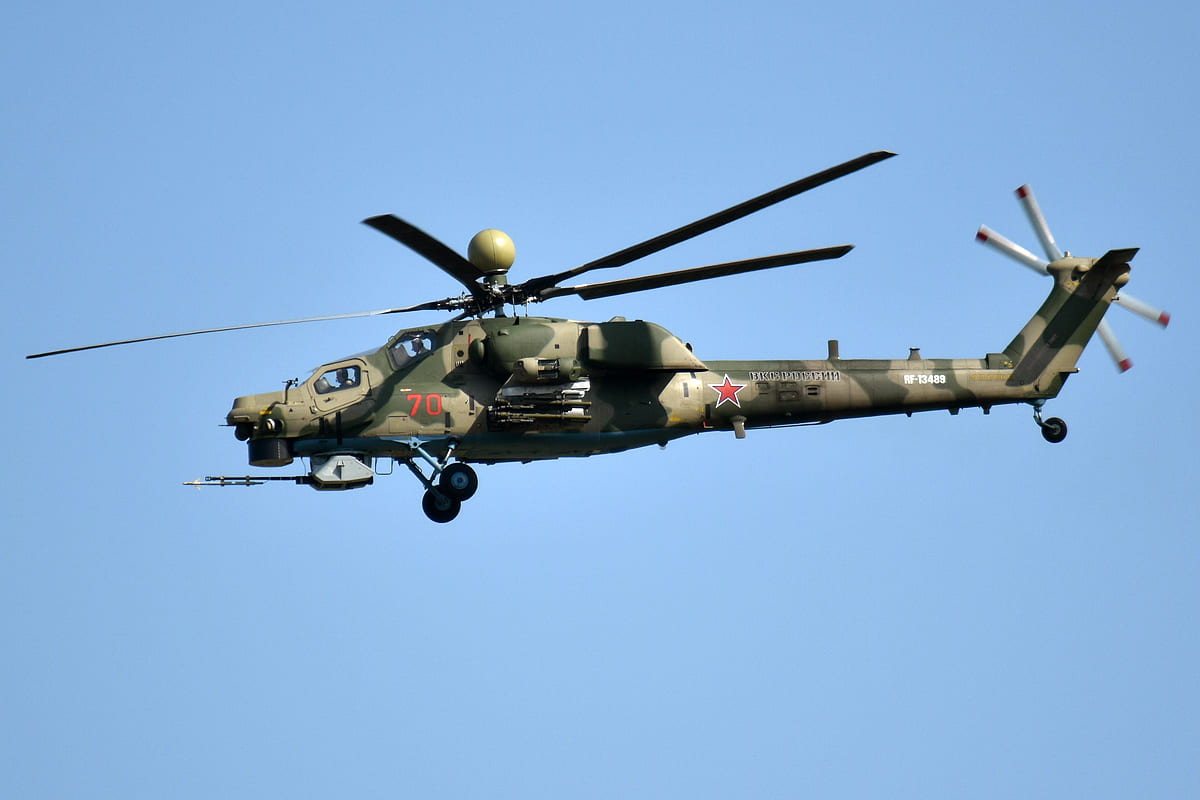How AI goes to war: 5 military tech innovations

AI is no longer confined to futuristic movies or research labs. It’s actively shaping modern warfare, moving rapidly from theoretical concepts to deployed capabilities on the battlefield. Across the globe, militaries are integrating and deploying autonomous and AI-enhanced systems that fundamentally redefine how operations are planned and executed. These technologies range from unmanned vehicles operating with increasing independence to complex systems aiding human decision-making and perception. Here’s a look at five groundbreaking AI technologies already in service or entering operational use, showcasing tangible examples of how science fiction is quickly becoming military reality.
Key AI Technologies Deployed in Modern Military Operations
1. AI in Autonomous Drone Systems & Swarms
What’s happening
Unmanned aerial vehicles (UAVs) have become ubiquitous in modern conflict, but AI is pushing their capabilities further towards autonomy and coordinated action. While long-range strikes deep into enemy territory are often conducted by larger, specifically designed strike drones, AI is playing a role in enhancing their navigation, target recognition, and electronic counter-countermeasures. Simultaneously, smaller, low-cost FPV (First-Person View) drones are being used in massive numbers on the front lines.
Although mass coordination of hundreds of FPVs via complex AI swarming algorithms is still largely experimental, AI is being applied to individual FPVs or small groups for tasks like autonomous target tracking, pathfinding in GPS-denied environments, or object identification (e.g., distinguishing between different types of vehicles or personnel), making them more effective even with limited human oversight during the final attack phase. Concepts like AI-guided “loyal wingman” drones (like the XQ-58A mentioned later) also represent a form of airborne swarm where AI facilitates coordination between manned and unmanned aircraft. ([news.com.au][1], [timesofindia.indiatimes.com][timesofindia.indiatimes.com_spiderweb])
Why it matters
- AI enhances the effectiveness and reduces the cognitive load on operators, allowing drones to perform missions more efficiently and with greater precision, especially in complex or contested areas.
- The potential for AI-coordinated swarms (even if currently limited in scale and autonomy) offers the ability to overwhelm defenses with speed, scale, and affordability, posing a significant challenge to traditional air defense systems.
- This technology represents a paradigm shift, moving from remotely piloted vehicles to semi-autonomous or even potentially fully autonomous combat drones capable of making certain operational decisions independently (within pre-defined parameters).
2. AI-Powered Counter-Drone Systems & Automated Air Defense

What’s happening
The proliferation of inexpensive and sophisticated drones demands equally rapid and cost-effective defenses. Militaries are deploying automated counter-drone systems that heavily rely on AI. These systems typically involve sensors (radar, cameras, acoustic sensors) linked to AI algorithms that detect, track, identify, and classify potential drone threats in real-time, distinguishing them from birds or other non-threats. Once identified, AI can cue a response mechanism, which could range from electronic jamming to physically neutralizing the drone. Examples include static or mobile turrets equipped with autocannons or other effectors.
While specific performance statistics for systems like Ukraine’s “Sky Sentinel” at scale in combat are hard to verify publicly, the concept of an automated turret using AI for detection and targeting is a verifiable trend being actively developed and tested. The goal is to provide a faster, cheaper alternative to traditional missile-based air defense against drone swarms, potentially achieving a lower cost per engagement.
Why it matters
- AI-powered counter-drone systems enable a much faster reaction time than human-operated systems, crucial for intercepting fast-moving or swarming threats.
- They offer a potentially cost-effective defense against the growing threat of cheap, mass-produced drones, addressing the economic imbalance of using expensive missiles against low-cost targets.
- These systems are a tangible example of AI being deployed for autonomous air defense, capable of operating with minimal human intervention once activated in a defined area.
3. AI Integration in Robotic Ground Platforms & Combat Dogs

What’s happening
Unmanned Ground Vehicles (UGVs) and more agile quadruped robots (“robot dogs”) are increasingly integrating AI for navigation, situational awareness, and task execution in environments too dangerous or inaccessible for humans. While the widespread deployment of robot dogs with lethal weapons in active combat remains limited and ethically debated, prototypes and demonstrations showcasing quadrupeds equipped with weapon mounts (rifles, rocket launchers) have been conducted by forces like the US military in urban drill scenarios, demonstrating the technical capability.
In combat zones like Ukraine, quadruped robots are reportedly being used primarily for less controversial roles such as reconnaissance, carrying supplies, mapping dangerous areas, and potentially acting as mobile sensor platforms or decoys in trenches and urban ruins. AI assists these robots with tasks like autonomous navigation through complex terrain, obstacle avoidance, and processing sensor data to identify objects or people.
Why it matters
- Robotic ground platforms extend military presence into high-risk environments (urban combat, minefields, trenches) without risking human lives.
- AI enables these robots to operate semi-autonomously, navigating and performing tasks with less reliance on constant remote control, increasing their effectiveness and reducing operator workload.
- Their potential roles range from mobile sentries and advanced scouts to logistical support in difficult terrain, offering a versatile, AI-enhanced addition to ground forces.
4. Autonomous Navigation & Operation in UGVs & UAVs
What’s happening
Beyond simple remote control, AI is enabling military vehicles to navigate and operate more autonomously. Examples include Unmanned Ground Vehicles (UGVs) like Estonia’s Milrem Type-X robotic combat vehicle, which incorporates AI for autonomous navigation in various terrains and can be integrated with heavy weapons systems up to 50mm cannons, operating as an uncrewed fire support platform. Similarly, Unmanned Aerial Vehicles (UAVs) are using AI for autonomous flight, route planning, and navigating in environments where GPS signals are jammed or unavailable.
Companies like Shield AI are developing UAVs, such as the MQ-35 V-BAT, designed to operate autonomously in complex urban areas or GPS-denied maritime environments by using AI for simultaneous localization and mapping (SLAM) and object recognition. While specific operational details by US forces in sensitive areas like the Black Sea may not be widely publicized, the capability for autonomous navigation in contested electronic environments is a key development being pursued and tested.
Why it matters
- Autonomous navigation allows UGVs and UAVs to operate more independently, reducing the need for constant human piloting or driving, freeing up personnel for other tasks.
- AI enables operations in GPS-denied or electronically contested environments, crucial for maintaining effectiveness against sophisticated adversaries attempting to disrupt communications and navigation signals.
- Autonomous capabilities allow uncrewed vehicles to perform complex tasks, like convoy following, perimeter patrol, or detailed area mapping, with greater efficiency and endurance.
5. AI-Enhanced Intelligence, Surveillance, Reconnaissance (ISR) & Communications
What’s happening
AI is fundamentally transforming the analysis of military data and the robustness of communication networks. The sheer volume of data from modern sensors (satellites, drones, ground sensors) is overwhelming for human analysts. AI is being deployed to automatically process, filter, and identify patterns in this data – spotting targets in satellite imagery, detecting anomalies in electronic signals, or predicting potential enemy movements based on aggregated information. The Pentagon, for instance, has allocated significant budgets towards AI-driven ISR and related domains like cyber defense and logistics optimization.
Advanced large language models and AI analysis tools are being developed and used by military and intelligence agencies for rapid analysis of text-based intelligence. Furthermore, tactical communication networks are leveraging AI for real-time data fusion, dynamic routing to maintain connectivity in contested environments (“self-healing”), and enhancing cybersecurity by detecting and responding to threats automatically.
Why it matters
- AI-enhanced ISR dramatically speeds up the process of turning raw data into actionable intelligence, providing commanders with faster and more comprehensive battlefield awareness.
- AI in communications ensures networks remain resilient and secure even under electronic attack or in complex operational environments.
- These AI applications act as a critical backbone, improving decision-making across all levels of command, from tactical operations on the ground to strategic planning, making military forces more informed and agile.
Summary Table: AI in Combat Roles
AI Technology Applied | Primary Combat Role | Significance |
|
Autonomous Drone Systems & Swarms |
Aerial strikes & reconnaissance |
Scalable offense, overwhelming defenses, reduced human risk |
|
AI-Powered Counter-Drone Systems |
Automated Air Defense (vs. Drones) |
Fast, potentially low-cost interception against UAVs |
|
AI in Robotic Ground Platforms |
Reconnaissance, Security, Support |
Operates in dangerous terrain, reduces human exposure |
|
Autonomous Navigation (UGVs & UAVs) |
Fire Support, Logistics, ISR |
Operates without human piloting, functions in GPS-denial |
|
AI-Enhanced ISR, Analysis, & Comms |
Intelligence, Command & Control Support |
Improves situational awareness & decision speed |
FAQ
Q: Are military AI systems truly autonomous?
A: As of 2025, most deployed military AI systems are highly autonomous but typically remain under human supervision (“human-on-the-loop” or “human-in-the-loop”). They can perform complex tasks independently but require human authorization for lethal actions or operate within strict, pre-defined parameters established by human commanders.
Q: What are the ethical concerns around AI in the military?
A: Major concerns include the potential for autonomous lethal weapons (LAWS) operating without human intervention, questions of accountability when AI systems make errors, the risk of algorithmic bias leading to unintended consequences, and the potential for an accelerated pace of conflict. International debates and efforts to establish regulatory frameworks are ongoing.
Q: How do AI systems distinguish between military targets and civilians?
A: AI systems designed for targeting rely on sophisticated computer vision and pattern recognition algorithms trained on vast datasets to identify and classify objects. However, ensuring 100% accuracy in complex or crowded environments is a major technical and ethical challenge. Robust rules of engagement and human oversight are critical safeguards.
Q: Is AI primarily used in expensive, advanced military equipment?
A: While AI is integrated into high-tech platforms, it’s increasingly being applied to low-cost systems like FPV drones and automated counter-drone turrets. AI is becoming a tool to make even inexpensive hardware more effective, democratizing access to advanced military capabilities.
Why It Matters Now
By 2025, AI in military use is not a distant concept – it’s tactical and operational, demonstrably deployed in real conflict zones and integrated into defense planning worldwide. From enhancing the effectiveness of drone strikes and enabling autonomous air defenses to improving intelligence analysis and operating robotic ground platforms, AI is rapidly reshaping modern combat roles, logistics networks, and the speed and accuracy of battlefield decisions. The technologies discussed here represent just the tip of the iceberg. Expect these AI-powered systems to become even more sophisticated, autonomous, and integrated across land, sea, air, cyber, and space domains in the coming years, presenting both significant opportunities and complex challenges for global security.
Read also
-
Russian bombers flee to Far East after operation Spiderweb attack. Tu-95 will now need 23 hours for Ukraine missile missions
-
Russia’s tanks hid behind smoke – Ukraine’s drones showed that trick is dead
-
Russia’s new V2U AI drone hunts Ukraine’s best weapons—so far, it is unjammable
-
Surprisingly, Russian soldiers used scissors to down a Ukrainian fiber-optic drone — but Kyiv also knows a trick or two














